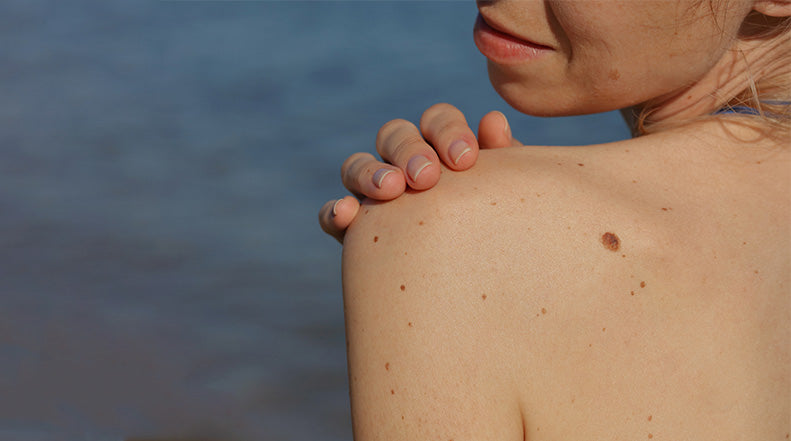Gender Confirmation Surgery: What to Do About Scarring

Gender confirmation surgery (GCS) is performed on individuals who experience gender dysphoria: a condition wherein individuals feel a mismatch between their biological sex and their gender identity. GCS may require multiple surgical procedures to meet the transgender person’s goals. This includes altering the physical appearance as well as the function of their existing sexual characteristics.
Gender confirmation surgeries commonly referred to as "top surgery" and bottom surgery. “Top surgery”, refers to the surgical procedures on the breasts of transgender patients. Top surgery includes breast augmentation for male-to-female transgenders, and bilateral mastectomy and male chest reconstruction for female-to-male transgenders. “Bottom surgery” refers to altering the genitals to match gender identity.
Since these are all major surgical procedures, scars will form after the incisions heal. Scarring can lead to emotional consequences, such as insecurity, embarrassment, and unhappiness. If you’ve had gender reassignment surgery and are concerned about the potential for scar development, keep reading to learn what you can do about scarring.
AFTER SURGERY CARE
To prevent scarring after gender confirmation surgery, ensure that you are following your doctor’s post-op instructions exactly. If your incisions are covered with steri-strips or paper tape, leave it on as long as directed. These help the wound heal by providing support and reducing tension on the incision.
You most likely already know that keeping the incision area clean and dry are important to prevent infection or inflammation. But did you know that both infections and inflammation can have a negative effect on scar appearance? According to a publication in the Journal of Cutaneous and Aesthetic Surgery, bacteria have the ability to induce excessive collagen production in the scar tissue. When the body produces too much collagen, a raised hypertrophic or keloid scar can result.
To help your incision heal and speed up your recovery, there are several things you should avoid after your gender confirmation surgery. First, avoid smoking for at least two weeks after the surgery. Smoking reduces the amount of oxygen reaching the skin, and has a negative effect on wound healing. Even better, stop smoking at least 4 weeks before surgery and don't start again!
You’ll also want to avoid exposing your scar to sunlight. The sun’s ultraviolet (UV) rays increase the production of melanin, the brown pigment that gives skin its color. Unprotected scars are prone to developing hyperpigmentation, which is the darkening of an area of skin due to an excess or irregular production of melanin. Once formed, this brown discoloration may be permanent. If avoiding sun exposure is not possible, apply a broad spectrum SPF 30 sunscreen. Even better, use NewGel+UV which combines the medical grade silicone with a mineral sunscreen to protect your scar from UV rays.
Finally, avoid applying pure vitamin E capsules or any other topicals to your scar unless approved by your doctor. Clinical studies have shown that pure vitamin E can actually make scar appearance worse by causing irritation and inflammation. One study examined the effects of vitamin E in 80 patients with hypertrophic scars. After two months, it was found that almost one-third of the patients reported local reactions to the vitamin E and, in some cases, topical vitamin E even worsened the cosmetic appearance of scars. (Can Fam Physician. 2006 ) Similarly, other topical products with plant-based ingredients like onion extract or Cepalin are more prone to cause sensitivity and irritation than bioinert products such as silicone.
START TREATMENT EARLY
One of the most important steps you can take to prevent or minimize scarring after a gender reassignment surgery is to start treatment early. Treatment may begin once the wound is closed (10-14 days post-op). Clinical studies have shown that silicone gel and sheeting are considered the first-line therapy to manage and minimize scarring. Silicone gel products are the only topical treatments recommended by the scar experts who create scar treatment guidelines for other doctors. Using products like NewGel+ early to prevent excessive scarring is highly recommended to help prevent the need for costly steroid injections, laser treatments, or even scar revision surgery months down the road.
NewGel+ offers the widest variety of silicone scar treatment products available, including products specifically for both FTM and MTF top surgeries. The NewGel+ products take into consideration that some top surgery scars are horizontal, some are curved, and others are circular around the nipple. Breast augmentation scars may be in the armpit or under the breast crease as well.
For example, the NewGel+ areola circles, lollypops, and anchors are specially designed to meet the needs of any cosmetic breast surgery--augmentation, lift (mastopexy), or reduction mammoplasty. The anchors (with vertical tabs trimmed off) are ideal for curved FTM top surgery scars. The NewGel+ Silicone 2" x 24" strips are perfect for straight FTM top surgery scars. The strip can be cut into multiple pieces, allowing you to customize the length as needed and to get multiple strips from one product.
Related Articles:




Comments